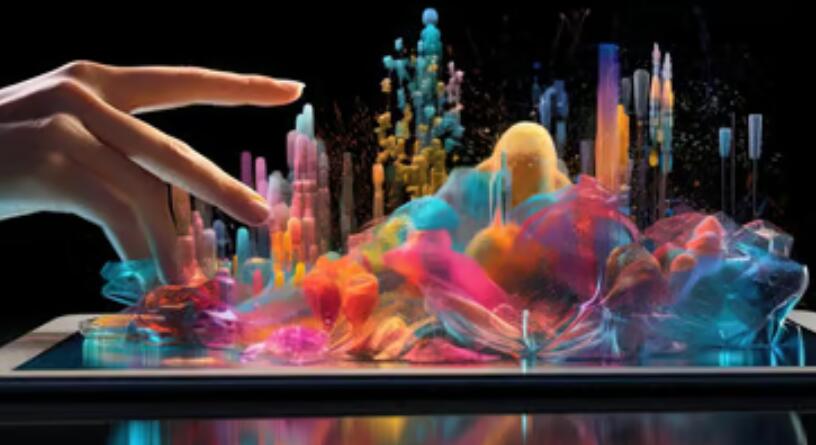The Rise of Digital Art and Its Popularity: A New Wave in the Art World
In recent years, digital art has emerged as a vibrant and innovative force within the art world. With the rapid advancement of technology, digital art has not only become more accessible but also more diverse in its forms and applications. This article explores the rise of digital art, its growing popularity, and the ways in which it is reshaping the landscape of contemporary art.
Introduction
Digital art, also known as digital fine art, is an artistic work created using digital technology as an essential part of the creative or presentation process. This includes, but is not limited to, graphic design, 3D computer graphics, digital painting, and digital collages. The rise of digital art is closely tied to the broader digital revolution, which has transformed many aspects of our lives, including how we create, consume, and interact with art.
The Evolution of Digital Art
Early Beginnings
The roots of digital art can be traced back to the 1960s when computer-generated art began to emerge. Early pioneers like Frieder Nake and Manfred Mohr used computers to create algorithmic art, laying the groundwork for what would become a rich and varied field.
The 1980s and 1990s
As personal computers became more prevalent, digital art began to gain traction among artists and the public. The advent of graphic design software like Adobe Photoshop and Illustrator in the late 1980s and early 1990s greatly expanded the possibilities for digital art creation.
The 21st Century
The turn of the millennium marked a significant shift in digital art’s popularity and acceptance. The rise of the internet allowed artists to share their work globally, and social media platforms provided a new avenue for exposure and community building.
Factors Contributing to the Popularity of Digital Art
Accessibility
One of the primary reasons for the growing popularity of digital art is its accessibility. With affordable software and hardware, more people can create digital art without the need for traditional art supplies. This has led to a democratization of the art world, allowing for a wider range of voices and styles to emerge.
Technological Advancements
The continuous development of technology has played a crucial role in the rise of digital art. Advanced software and tools enable artists to create highly detailed and complex works with relative ease. Additionally, virtual reality (VR) and augmented reality (AR) are opening up new dimensions for digital art, offering immersive experiences for viewers.
Online Platforms and Social Media
The internet has been instrumental in the dissemination of digital art. Online galleries, social media platforms, and digital marketplaces have made it easier for artists to showcase their work and for enthusiasts to discover and purchase art. This has contributed to a broader audience and greater visibility for digital artists.
NFTs and the Art Market
The introduction of non-fungible tokens (NFTs) has further propelled the popularity of digital art. NFTs provide a way to authenticate and sell digital art, offering artists a new revenue stream and collectors a novel way to invest in art.
The Impact of Digital Art on the Art World
Redefining Art
Digital art challenges traditional notions of what constitutes art. It blurs the lines between art and technology, leading to innovative forms of expression that were previously unimaginable.
Collaboration and Community
The digital art community is highly collaborative and supportive. Artists often share techniques, resources, and feedback, fostering a sense of community and collective growth.
Education and Learning
Digital art has also influenced art education. Many institutions now offer courses in digital art techniques, and online tutorials and resources make learning accessible to a wider audience.
Conclusion
The rise of digital art and its growing popularity are testaments to the transformative power of technology in the arts. As digital art continues to evolve, it promises to push the boundaries of creativity and redefine the art world. With its accessibility, technological advancements, and the support of online platforms, digital art is not just a passing trend but a significant and lasting contribution to the rich tapestry of human artistic expression.
